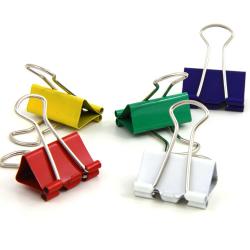Source Institutions
Source Institutions
Add to list Go to activity
Activity link broken? See if it's at the internet archive

In this simulation of natural selection, learners use binder clips in three different sizes to represent the diversity of beak sizes in a bird population. They use the "beaks" to collect food--if they collect enough to survive and/or reproduce, they and possibly their offspring play the next round. In the subsequent rounds, the food supply changes, putting an adaptive pressure on the population. Learners track how the population changes over time and see possible speciation in progress. This activity is more advanced than the classic bird beak activity in that the different sizes of clips represent birds that are not only adapted to different food, but also have different caloric requirements to survive and reproduce.
- 10 to 30 minutes
- 45 to 60 minutes
- $5 - $10 per group of students
- Ages 11 - 18
- Activity, Lesson/Lesson Plan, Simulation
- English
Quick Guide
Materials List (per group of students)
- 1.5 lb. unpopped popcorn
- 1.25 lb. lima beans
- 255 marbles
- 20 large bulldog binder clips No. 3 (2 5/8 inches)
- 20 medium-sized bulldog binder clips No. 2 (2 1/4 inches)
- 20 small-sized bulldog binder clips No. 1 (1 1/4 inches)
- 30 plastic cups
- 1 Food Values transparency
- 1 Clipbird Populations transparency
- 1 Clipland Scene transparency
- 1 overhead transparency projector
Subjects
-
Life Sciences
- Diversity of Life
-
Ecology
- Populations
-
Evolution
- Mechanisms of Evolution
-
Mathematics
-
Data Analysis and Probability
- Data Analysis
- Data Collection
-
Data Analysis and Probability
-
The Nature of Science
-
The Scientific Process
- Conducting Investigations
- Gathering Data
- Formulating Explanations
- Communicating Results
-
The Scientific Process
Informal Categories
- Animals
- Nature and Environment
Audience
To use this activity, learners need to:
- see
- be mobile
- touch
Learning styles supported:
- Involves hands-on or lab activities
Other
Components that are part of this resource:
- Food Values Transparency
- Clipbird Populations Transparency
- Clipland Scene Transparency
- Adaptation Background Information
- Natural Selection Background Information
- Finch Beak Data Sheet Background Information
Access Rights:
- Free access
By:
- Janulaw, Al ; Scotchmoor, Judy
Rights:
- All rights reserved, Regents of the University of California, 2011
